Regensburg is just a train ride away from Nuremberg, so the day after the Roth festivities I boarded the S2 from Roth to head back to Nuremberg Main Station, where I would change to get on a regional express. I had already pre-booked my Bayern ticket, so all I needed to do was show my printout and the credit card I’d used to book it to the ticket inspector.
(While there are no turnstiles at the train stations, it’s really not advisable to travel on the German trains without a ticket — the fines are punitive!)
It took about an hour to get to Regensberg, which was earlier than the estimated time shown on my DB Navigator app. Apparently, I had boarded a different regional express that had less stops. Happy accidents 🙂
My lodging in Regensburg was a bed-and-breakfast called the Castle Hotel. No it wasn’t a castle, but it was located right next to the Palace St. Emmeran house of Thurn und Taxis. It was less than a kilometer’s walk from the train station, although dragging my luggage on the cobblestone streets the last few hundred meters was a bone-jarring experience.
The reason I chose the Castle Hotel is that it was right on the edge of Regensburg’s Old Town, the reason Regensburg was declared a UNESCO World Heritage Culture Town. The Castle Hotel is a refurbished old house, and as such it had no elevator and very steep stairs. But the good thing is my room had an en suite bathroom instead of a shared bathroom you might see in other European hotels. The bed was comfy, the pillows soft, and the air through my shuttered windows cool, so after walking about my area of Old Town to familiarize myself with it and find dinner, I crashed and slept well.
The next morning I woke up to a great breakfast spread. I had my choice of eggs, yogurt, cold cuts, and breads prepared by Castle Hotel’s proprietor.

I was relieved to bite into a soft croissant — most breads in Germany are a bit harder. (Notice the Bavarian emblem on the decorative bowl.)
I had mistakenly brought along the keys from my homestay in Roth, so I needed to find a Deutsche Post office to mail it back to them. (Lucky I discovered my mistake while I was still in Germany instead of halfway home to Manila!) I used the Castle Hotel’s fast WiFi to do my research on DP branches and found that it was right across the Regensburg Cathedral (or Dom St. Peter). So off I went on two feet to explore.
- notice the Red and White shutters — Franconia!
- dirndles and lederhosen
- the Dom St. Peter Regensburg
- Gothic architecture
- The Nuremberg post office is inside this orange building.
The post office staff were very helpful even if they said they spoke “only a little English.” They helped me choose which kind of box to package the keys in and gave me a small envelope as an extra layer of protection for the keys. So into the mailbox that went, and I headed out to explore the rest of Old Town.
The thing with coming from the Philippines is, most of our “old” structures are only a few centuries old. Regensburg has been around since the time of the Romans, and even has a stone bridge from the 12th century. The Steinern Brücke and the Dom St. Peter are the two iconic sights Regensburg is famous for; unfortunately when I visited it was during what they consider the off-season for tourists. The bridge was under repair, and half-covered by scaffolding.
- Regensburg’s Steinern Brücke (Stone Bridge)
- the view from the bridge
- Some of the repair work needed to keep this bridge useable!
- an artist painting and onlookers watching
- The Stone Bridge fords the Danube River, but there’s a little islet in the middle that houses a hotel and a park.
- the street on the opposite bank of the Danube from Regensburg Old Town
- cobblestone
I headed back into the center of Old Town for a little more sightseeing. I was fascinated by all the narrow streets with the old buildings hunched up against each other. Most of them are now shophouses and hotels thriving on the tourists Regensburg draws in.
Regensburg began as a Roman fortification on the Danube, and ruins are all over the city integrated into more modern buildings.
- one-way street
- Some roads were closed to cars and only allowed scooters.
- an old-fashioned mural of David and Goliath atop a modern eyewear store
- the building next to this houses a parking garage
- a marker pointing the way to the remnants of a Roman wall
- the wall is showcased and preserved within a more modern building
- prenup photoshoot, anyone?
Because of the mild climate, food doesn’t spoil as easily; it’s kind of like being in a giant crisper. Fruit was sold in open-air markets like this one.
Oskar Schindler once lived here. I nearly missed the marker of the house and only caught it when I stopped to take photos of some bicycles parked in front of it.
Walking through Regensburg was like walking through history that I had only previously read about in books and online. I ended up walking 11 kilometers on my one full day there just looking at everything. I lamented what the Philippines had lost in cultural heritage when Intramuros was bombed, and what we continue to lose every day with the razing of old buildings to make way for new developments. Preservation of heritage houses and architecture, and simply placing plaques where historical figures resided and events transpired goes a long way toward preventing national amnesia. The Germans seem determined not to forget both the good and the bad, as I would see in my next stop: Munich.

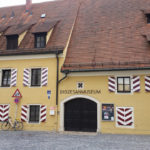
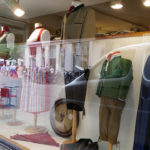
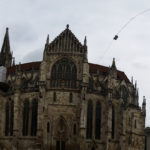
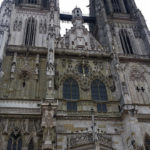
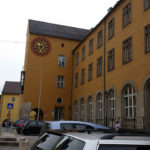
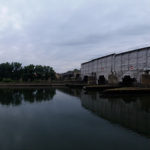
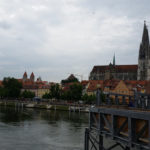
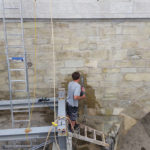
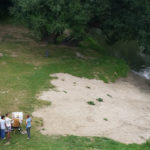
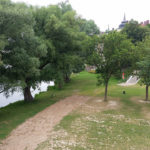
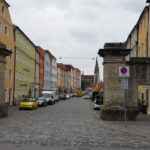

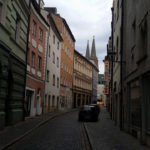
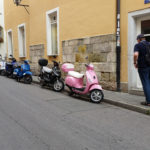
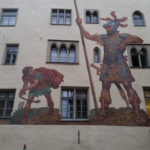
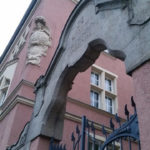

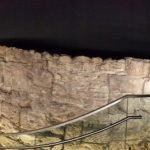
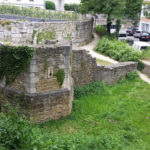
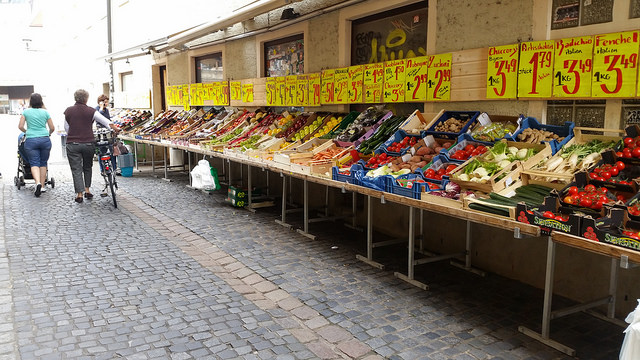
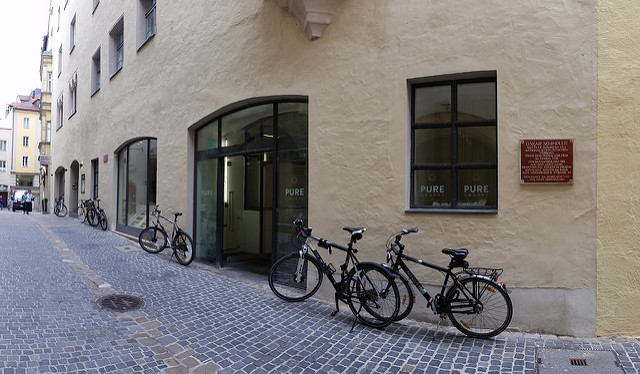
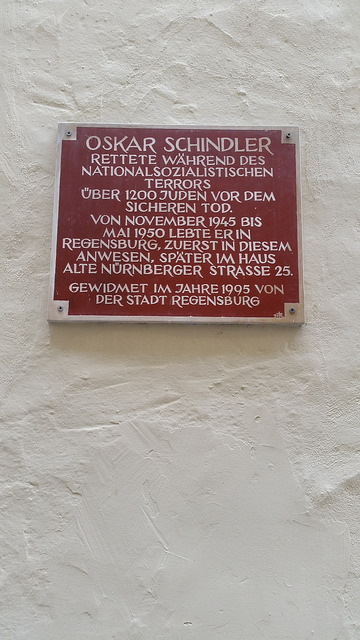
 Follow
Follow
OMG everything in Bavara is sooo magical for me! <3 this is one of my top travel destination in my bucketlist. 🙂
You should definitely go visit — the Bayern Train Ticket makes transport a breeze and affordable as well 🙂